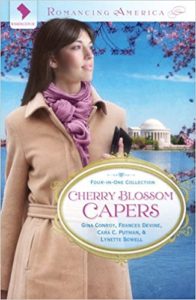How to Edit a Full-Length Novel to a Novella

When I contracted my novella in January and had to cut 30,000 words off my full length novel, I knew it was going to be hard. In fact, I almost bailed on submitting the anthology to Barbour because I knew that would mean cutting more than half of my story. The pain of deleting my brilliant prose aside, I knew it would be difficult to edit this mystery whose characters and clues were tightly woven together.
But I signed that contract, took a deep breath, and said a prayer. I could do this!
I did okay cutting the first 10,000 and realized there were a lot of unnecessary words that went fairly easily. Then I started messing with my characters’ voice to save words and that hurt. So I moved on to boring, not so important scenes. Found a few of those. Cut out a couple of fun, but unnecessary characters and started the whole process again!
This week I nearly had a nervous break down. After cutting yet another scene (and weaving the information in somewhere else) I wrote to my agent telling him I was having a hard time swallowing this elephant. I couldn’t see how I could cut the last 6,000 words. He very wisely told me that when the ark is sinking, I should throw the elephant out first. In other words, find big chunks I could cut.
Problem was, I did that. Over and over again. Or did I? Sure I got rid of the easy stuff, then the scenes I could live without, but now 6,000 – 8,000 words shy of my goal I have to take a harder look at my story and go chapter by chapter trying to salvage the voice and heart of my story as well as cut the stuff my book can live without.
Notice I didn’t say “what I can live without!”
It wasn’t supposed to be this hard, but it is. So I’m back to editing. When most writers are trying to increase their word count, I’m trying to cut mine. Here are some things I learned in the process.
Contractions are Your Friend
Any where I could use a contraction, I did. Unless your character is “proper” or foreign, most people talk in contractions anyway.
Cut the Unnecessary Words
You know that word or phrase your character ALWAYS uses all the time JUST like my character DOES. JUST cut it out ALREADY! I read somewhere to do a search for those words and CAPITALIZE them, so when you go BACK through you WIP, they jump out at you. This has helped me cut several thousand words!
Don’t Show Everything
I know it’s been drilled into us to show don’t tell, but a wise author once said that refers primarily to emotions! I learned that I could “tell” how a person got from point A to point D and skip the details in between. Not only will it make your story move, but it will cut the word count.
Resist the Urge to Explain (RUE)
In an effort to make my character’s motivations clear, I often tried to explain their motivations through internal dialogue, external dialogue or both. Then I started asking myself “does the reader need to know this now?” If the answer was no, I cut it out and looked for a shorter way to weave in the motivation later. I learned, most times it was unnecessary. I had packed the scene enough that I believe the reader understood without me telling. I’m still mastering this one, but I know I’ll hold a degree in cutting out the RUE by the end of this WIP.
Cut the Double Talk
I admit I’m wordy! Editing this story made me realize I often say the same thing a couple of times in different ways. For example, I might have internal dialogue and external dialouge that says similar things or my character might ask himself a question when it was already expressed in another way in a previous chapter. Not only can it be annoying to the reader, but it slows down the action. Just cut it out, not matter how much you’re in love with all the creative ways you’ve said it!
Pick Your Adverbs, Adjectives, and Conjunctions Carefully
Most times if your writing is strong, you don’t need many adverbs and adjectives. Sometimes you do. I noticed my adjectives would sometimes come in pairs. That’s when I chose one over the other. When it comes to starting a sentence, I seem to favor AND and BUT. I’m not sure why, but now that I know, I can go back and keep the conjunctions that add to the story. And I’m not talking word count.
Cut the Scene Short
I like to wrap up a scene sometimes with a cliff hanger, often times with internal dialogue. But I found that if I cut the last sentence or two from the scene, it still works. Often times it was better.
Editing our babies is one of the hardest things we do as authors. What ways have you found to make it easier?